You are using an out of date browser. It may not display this or other websites correctly.
You should upgrade or use an alternative browser.
You should upgrade or use an alternative browser.
Aset...too much green?
- Thread starter Mlh
- Start date
DejaWiz
Ideal_Rock
- Joined
- Apr 23, 2021
- Messages
- 6,929
Hi, Mlh!
GCAL doesn't use the AGS ASET, but their scope does reveal quite a bit, as well.
This diamond likely has some pavilion painting, around 6°?
Very hard to try and translate the GCAL scope to ASET scope.

GCAL doesn't use the AGS ASET, but their scope does reveal quite a bit, as well.
This diamond likely has some pavilion painting, around 6°?
Very hard to try and translate the GCAL scope to ASET scope.

Visible Effects of Painting & Digging on Superideal Diamonds
With grateful acknowledgment to John Pollard, Sergey Sivovolenko, AGSL and GIA Laboratories for valuable resources and input. Graphics produced with DiamCalc software by OctoNus. Note: This article pertains only to […]
www.pricescope.com
Hi, Mlh!
GCAL doesn't use the AGS ASET, but their scope does reveal quite a bit, as well.
This diamond likely has some pavilion painting, around 6°?
Very hard to try and translate the GCAL scope to ASET scope.

Visible Effects of Painting & Digging on Superideal Diamonds
With grateful acknowledgment to John Pollard, Sergey Sivovolenko, AGSL and GIA Laboratories for valuable resources and input. Graphics produced with DiamCalc software by OctoNus. Note: This article pertains only to […]www.pricescope.com
Thanks @DejaWiz ! I am a complete novice re: painting and digging. I defer to you!! So hard to tell with this one? Think the painting is impacting performance?
- Joined
- Aug 4, 2008
- Messages
- 15,551
Hi, Mlh!
GCAL doesn't use the AGS ASET, but their scope does reveal quite a bit, as well.
This diamond likely has some pavilion painting, around 6°?
Very hard to try and translate the GCAL scope to ASET scope.

Visible Effects of Painting & Digging on Superideal Diamonds
With grateful acknowledgment to John Pollard, Sergey Sivovolenko, AGSL and GIA Laboratories for valuable resources and input. Graphics produced with DiamCalc software by OctoNus. Note: This article pertains only to […]www.pricescope.com
no it doesn't look at the leakage pattern.
Then look at the lack of black in the 6 degree pavilion painting aset.
With the gcal images you have to look at both the leakage image(optical brilliance) and the symmetry image.
DejaWiz
Ideal_Rock
- Joined
- Apr 23, 2021
- Messages
- 6,929
no it doesn't look at the leakage pattern.
Then look at the lack of black in the 6 degree pavilion painting aset.
With the gcal images you have to look at both the leakage image(optical brilliance) and the symmetry image.
Thank you, Karl - invaluable info, as always!
no it doesn't look at the leakage pattern.
Then look at the lack of black in the 6 degree pavilion painting aset.
With the gcal images you have to look at both the leakage image(optical brilliance) and the symmetry image.
So I'm confused. Do you think the image tells the story about the performance of this stone? Does it look good to you? Sorry for being such a novice! Thanks so much for weighing in @Karl_K!!
- Joined
- Nov 4, 2022
- Messages
- 27
Hi @Mlh
It was nice speaking to just now - here are the slides i was telling you about on the call - i am also going to post some additional info on the stone in a few
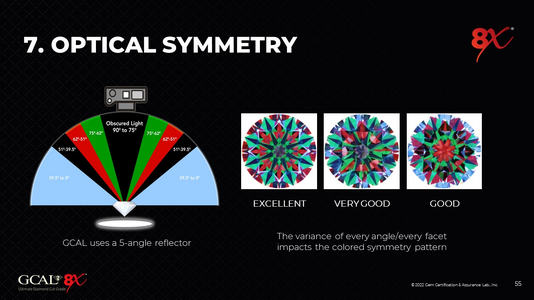
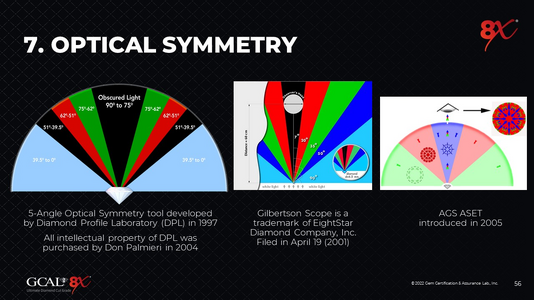
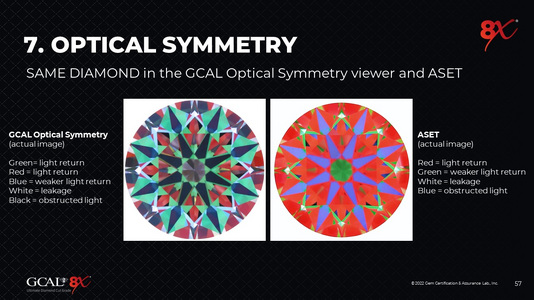
It was nice speaking to just now - here are the slides i was telling you about on the call - i am also going to post some additional info on the stone in a few



- Joined
- Nov 4, 2022
- Messages
- 27
@Mlh - this was before we reported a few additional measurements
LGF is 76.57%
Star is 48.72%
There is crown painting of 1.75 (average)
@DejaWiz was correct that there is pavilion painting of 0.57 (average) and a max of 1.34
and below is the slide we showed during the webinar of the painting and digging we allow on 8X

LGF is 76.57%
Star is 48.72%
There is crown painting of 1.75 (average)
@DejaWiz was correct that there is pavilion painting of 0.57 (average) and a max of 1.34
and below is the slide we showed during the webinar of the painting and digging we allow on 8X

- Joined
- Nov 4, 2022
- Messages
- 27
finally, just for reference, because we hadnt taken hearts and arrows images for this stone, this is the ray-traced generated image of the hearts of GCAL Cert 300380065
to be clear - if we show hearts and arrows on our cert or web page, it is always actual
but this is the ray trace from the scan (in lieu of the actual)
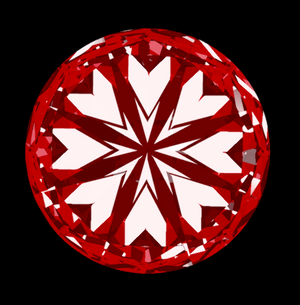
to be clear - if we show hearts and arrows on our cert or web page, it is always actual
but this is the ray trace from the scan (in lieu of the actual)

@Mlh - this was before we reported a few additional measurements
LGF is 76.57%
Star is 48.72%
There is crown painting of 1.75 (average)
@DejaWiz was correct that there is pavilion painting of 0.57 (average) and a max of 1.34
and below is the slide we showed during the webinar of the painting and digging we allow on 8X

Thank you so much @GCAL-Angelo !! I so appreciate you taking the time to help me!!
finally, just for reference, because we hadnt taken hearts and arrows images for this stone, this is the ray-traced generated image of the hearts of GCAL Cert 300380065
to be clear - if we show hearts and arrows on our cert or web page, it is always actual
but this is the ray trace from the scan (in lieu of the actual)

Wow!! Very cool!!
- Joined
- Nov 4, 2022
- Messages
- 27
- Joined
- Jul 31, 2014
- Messages
- 20,018
omg it's GORGEOUS!
- Joined
- Oct 6, 2005
- Messages
- 6,924
What a stunner! How will you set it?
kathness
Shiny_Rock
- Joined
- Feb 4, 2013
- Messages
- 403
Beautiful
Share:
Featured Topics
Past, Present, Future: The Meaning of Three-Stone Engagement Rings
Past, Present, Future: The Meaning of Three-Stone Engagement Rings - 04/14

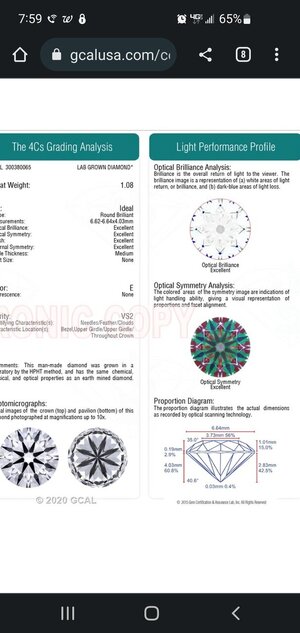
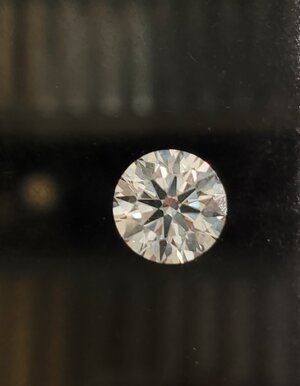


300x240.png)